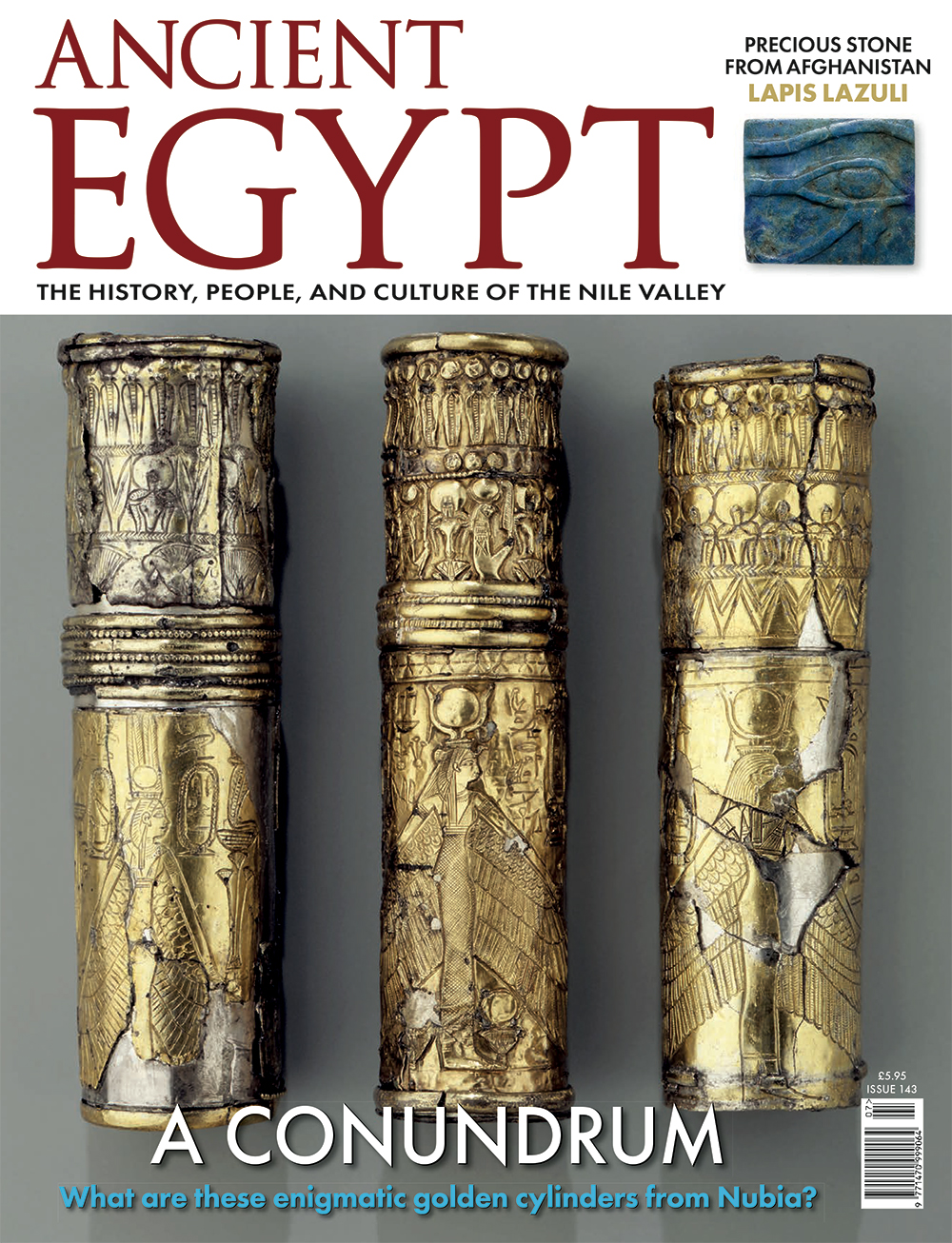From time to time, excavators of ancient sites come across artefacts that they cannot identify. The beautifully decorated gold cylinders pictured on our cover are a case in point. They were found in the tomb of a Napatan king at Nuri in Sudan. Over the years since their discovery in 1916, there have been many suggestions as to their purpose, but all have been discounted… until now. Peter Lacovara has solved the mystery!
There was no doubt as to the purpose of Tutankhamun’s gold mask when it was discovered. It was inset with blue glass and faience in imitation of lapis lazuli, a semi-precious stone that had been greatly treasured from the earliest times but was in short supply, as it had to be traded over hundreds of miles from its source in the quarries of Afghanistan. Hilary Wilson traces its use over the millennia.
In September, the annual Current Research in Egyptology (CRE) conference will be held at the University of Liverpool. CRE events allow British and overseas postgraduate students and independent researchers to showcase their work in a series of short presentations. Three of the papers to be presented are previewed in this issue, and three more will be included in AE 144.
For our regular ‘Out and About’ article in this issue, Geoffrey Lenox-Smith describes the unusual Temple of Hibis in Kharga Oasis – a rare example of a monument built during the Persian occupation of Egypt. It happens to be one of my own favourite sites, because of its importance in the evolution of column design: a transition from campaniform papyrus columns to the composite form that became the norm in the Ptolemaic and Roman Periods.
In AE 123, Professor Paul Nicholson introduced us to his work at the Sacred Animal Necropolis at Saqqara, where the dogs buried in the Catacombs of Anubis were bred for sacrifice. In this issue, he takes a wider view of the necropolis site, describing a project to establish the relative chronology of its various parts.
On 16 May, as I completed preparation of this issue, I heard the very sad news of the death of Professor Barry Kemp, who was one of the greatest Egyptologists of our time. For decades, he has worked tirelessly to preserve and restore the site of Akhenaten’s city at Amarna, and his legacy will live on forever.

